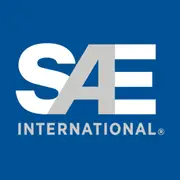
SAE International, formerly named the Society of Automotive Engineers, is a United States-based, globally active professional association and standards developing organization for engineering professionals in various industries.
AMS2408
Plating, Tin AMS2408K. This specification covers the requirements for electrodeposition of tin on metals and the properties of the deposit.
AMS2410
Plating, Silver Nickel Strike, High Bake AMS2410L. This specification covers the requirements for electrodeposited silver on other metals, usually with a nickel strike between the basis metal and the silver.
AMS2422
Plating, Gold AMS2422F. This specification covers the requirements for electrodeposited gold plate. It is the same as MIL-G-45204 SPECIFICATIONS · ASTM B488 SPECIFICATIONS
AMS2750
Pyrometry AMS2750F. This specification covers pyrometric requirements for equipment used for the thermal processing of metallic materials. Specifically, it covers temperature sensors, instrumentation, thermal processing equipment, correction factors and instrument offsets, system accuracy tests, and temperature uniformity surveys. These are necessary to ensure that parts or raw materials are heat treated in accordance with the applicable specification(s).
AMS2770
Heat Treatment of Wrought Aluminum Alloy Parts AMS2770R.
This specification specifies the engineering requirements for heat treatment, by part fabricators (users) or their vendors or subcontractors, of parts (see 8.6.1). It also covers heat treatment by warehouses or distributors converting raw material from one temper to another temper (see 1.3 and 8.5). It covers the following aluminum alloys:
- 1100, 2004, 2014, 2017, 2024, 2098, 2117, 2124, 2195, 2219, 2224, 3003, 5052, 6013, 6061, 6063, 6066, 6951, 7049, 7050, 7075, 7149, 7178, 7249, and 7475.
AMS4001
Aluminum Sheet and Plate, 0.12Cu (1100-0), Annealed(Cancelled Jul 2007) AMS4001J. This specification covers aluminum in the form of sheet and plate.
AMS 4001H has been cancelled and superseded because equivalent technical requirements are provided by ASTM B 209.
AMS4500
GASKET – 37° FLARED TUBE FITTING, COPPER, AMS4500(STABILIZED Sep 2014) AS3073D. This specification covers unalloyed copper in the form of sheet, strip, and plate.
AMS5553
GASKET – 37° FLARED TUBE FITTING, NICKEL, AMS5553(STABILIZED Dec 2014) AS3075E. This specification covers nickel in the form of sheet and strip 0.001 to 0.250 inch (0.03 to 0.65 mm) inclusive.
AS3282C
GASKET – 37° FLARED TUBE FITTING, NICKEL, AMS5553(STABILIZED Oct 2014) AS3282C.
AS4395
FITTING END, FLARED, TUBE CONNECTION, DESIGN STANDARD AS4395B.
AS4396
FITTING END, BULKHEAD, FLARED, TUBE CONNECTION, DESIGN STANDARD AS4396B.
AS4824
GASKET, FITTING END, 37° FLARED AS4824B.
AS4825
GASKET, FITTING END, 24° CONE AS4825.
AS683E
Installation Procedures and Torques for Fluid Connections AS683E. These procedures cover the following:
- Section 3 – Cone end connections for flared tube and brazed ferrule, with and without gasket.
- Section 4 – Boss end connections, positioned type, with back-up ring.
- Section 5 – Boss end connections, positioned type, without back-up ring.
- Section 6 – Boss end connections, non-positioned type.
- Section 7 – Bulkhead connections.
J512
Automotive Tube Fittings J512_202203.
This SAE Standard covers complete general and dimensional specifications for the various types of tube fittings intended for general application in the automotive, appliance, and allied fields. See SAE J1131 for the performance requirements of reusable (push to connect) fittings intended for use in automotive air brake systems. Flare type fittings shall be as specified in Figures 1 to 4 and Tables 3 to 5.
J513
Refrigeration Tube Fittings—General Specifications J513_201912. This SAE Standard covers complete general and dimensional specifications for refrigeration tube fittings of the flare type specified in Figures 1 to 42 and Tables 1 to 15. These fittings are intended for general use with flared annealed copper tubing in refrigeration applications.
Dimensions of single and double 45 degree flares on tubing to be used in conjunction with these fittings are given in Figure 2 and Table 1 of SAE J533.
The following general specifications supplement the dimensional data contained in Tables 1 to 15 with respect to all unspecified details.
J514
Hydraulic Tube Fittings J514_201201.
This SAE Standard covers complete general and dimensional specifications for 37 degree flared and flareless types of hydraulic tube fittings and O-ring plugs. Also included are pipe fittings and adapter unions for use in conjunction with these tube fittings. These fittings are intended for general application in hydraulic systems on industrial equipment and commercial products.
These fittings are capable of providing leakproof, full flow connections in hydraulic systems operating at working pressures as specified in Table 1 for respective sections.
- Section 1—37 Degree Flare Tube Fittings
- Section 2—Flareless Tube Fittings
Metallic Connections for Fluid Power and General Use – Part 1: 37 Degree Flared Fittings J514/1_202112.
This part of SAE J514 covers general and dimensional specifications for 37 degree flared tube fittings. Also included are 37 degree flared fittings with NPTF pipe threads in Appendix B. These fittings are intended for general application in hydraulic systems on industrial equipment and commercial products.
These fittings are capable of providing leak-proof, full flow connections in hydraulic systems operating at working pressures as specified in Table 6. Since many factors influence the pressure at which a hydraulic system will or will not perform satisfactorily, the values shown in Table 6 should not be construed as a guaranteed minimum.

